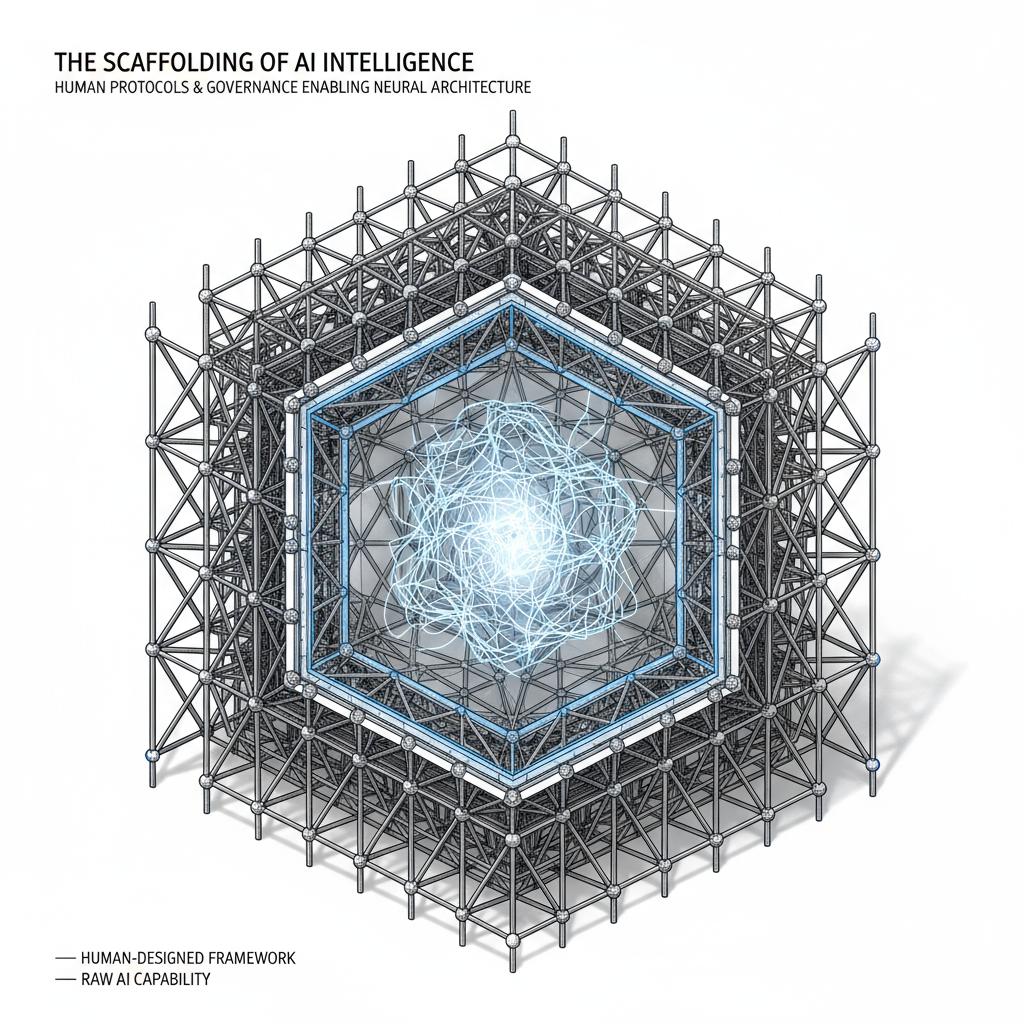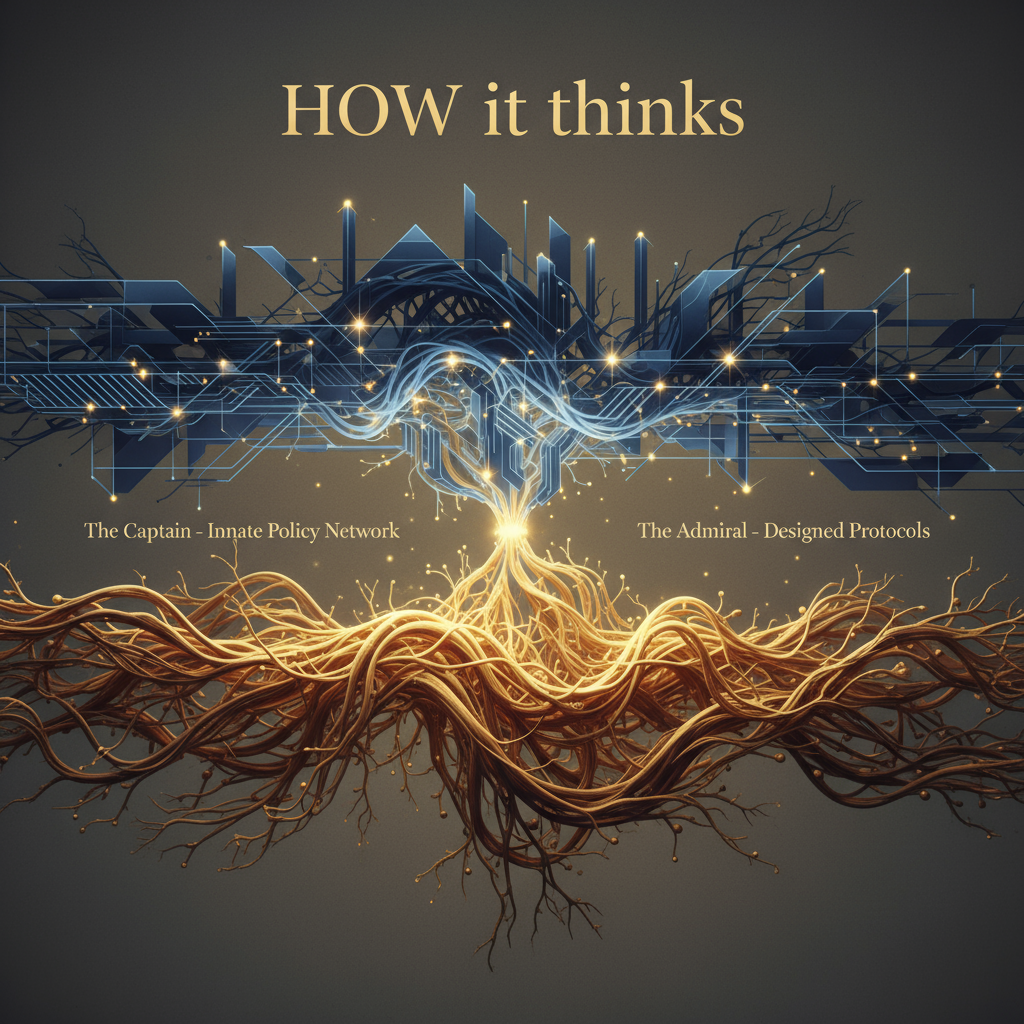Origins & Development
From Simple Questions to Profound Insights
The WHAT vs HOW model emerged from a simple question about data compression that led to a profound realization: our understanding of artificial intelligence was trapped in inadequate metaphors. We called it a brain, a library, a stochastic parrot—each falling short.
Through intense inquiry and analysis, we discovered that the key to understanding AI lies in a fundamental distinction: the difference between what it knows and how it thinks. This isn't just semantics—it's the foundation of a new framework that actually helps us comprehend and direct AI systems effectively.
- Began with data compression research questions
- Recognized limitations of existing AI metaphors
- Developed the fundamental WHAT vs HOW distinction
- Created the naval command structure analogy
- Validated through practical application and testing

